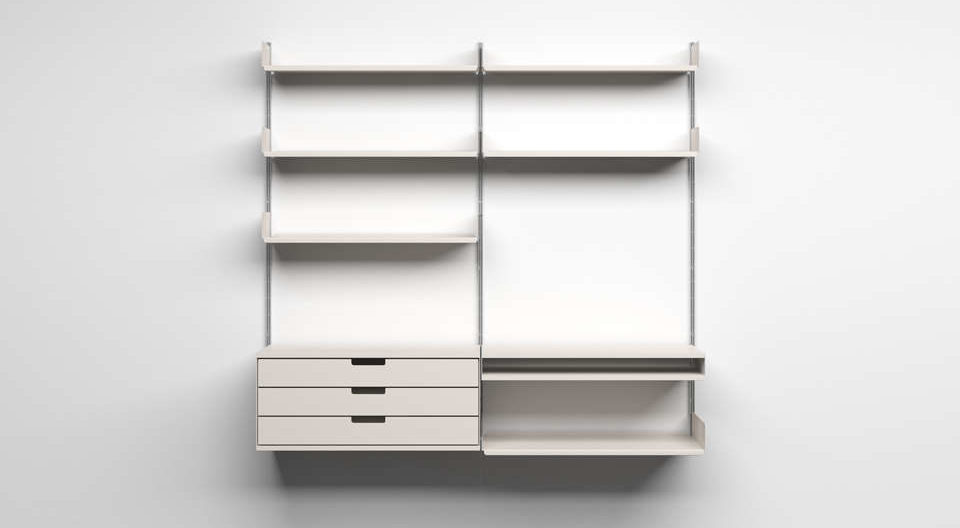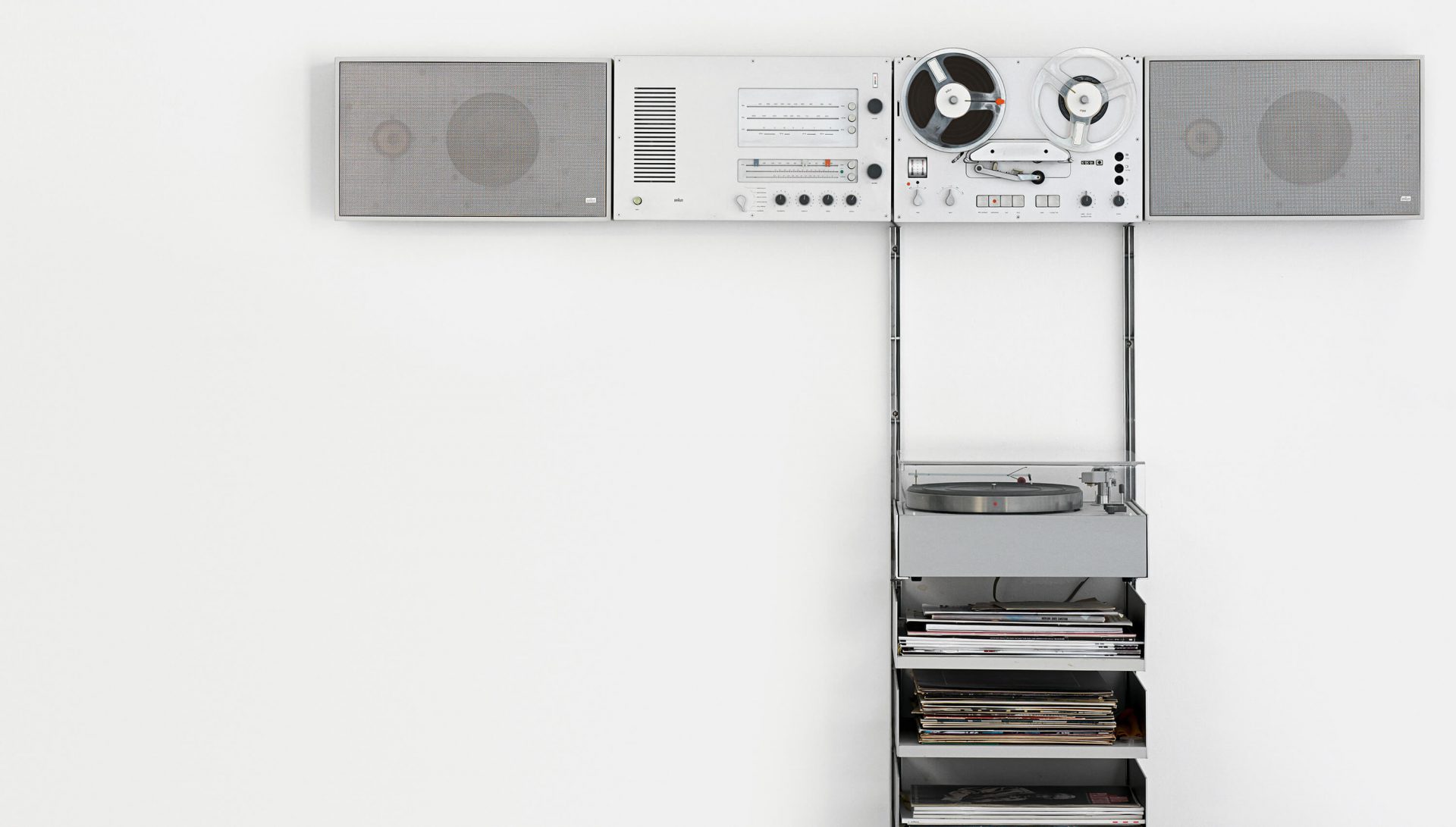The ten principles of good design laid out by Rams have not just influenced my appreciation for aesthetic and functionality, but they’ve also served to guide my own approach for design.
Luke MellerBonsai Interior Designer | BA (Hons) Sustainable Product Design
Seeing Dieter Rams’ modular hi-fi system for Braun simply inspires me. Its blend of function and form, and the elegance in its simplicity, reinforces my belief in the power of thoughtful design. This hi-fi system is more than just a product of Rams’ brilliant mind; it’s a reflection of his deep understanding that great design is about enhancing life, not complicating it. Dieter Rams’ modular hi-fi system for Braun nestled within the adaptable Vitsœ 606 shelves, stands as a testament to his vision of living spaces that are not dominated by technology, but enriched by it.
Rams’ influence extends beyond his products; it resides in the intangible ethos that governs good design. His principles are a blueprint for creating work that is meaningful, responsible, and honest. They urge designers to ask not only “Can this be made?” but “Should this be made?” This ethos, more than any single creation, is his legacy.
In an age of excess, where more often equates to better, Rams’ principles offer a counter-narrative: that restraint is a form of elegance, that longevity trumps novelty, and that understanding is the highest form of functionality. His work with Braun and Vitsœ reminds us that good design is not about objects; it’s about the relationship between the object and the user, a dialogue that speaks of respect, utility, and beauty. Embracing Rams’ “less, but better” philosophy has not only shaped my approach to design but has also inspired a more mindful and purposeful way of living.


